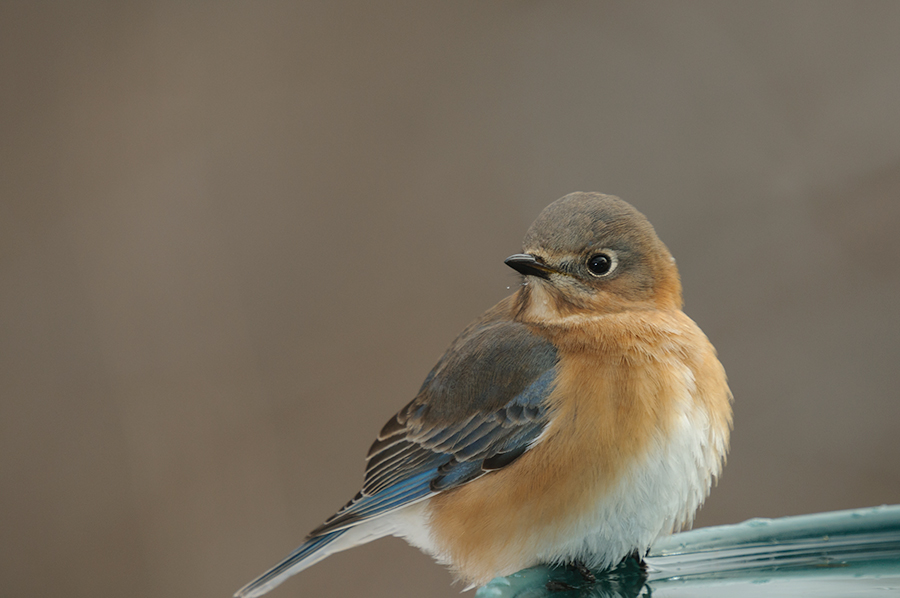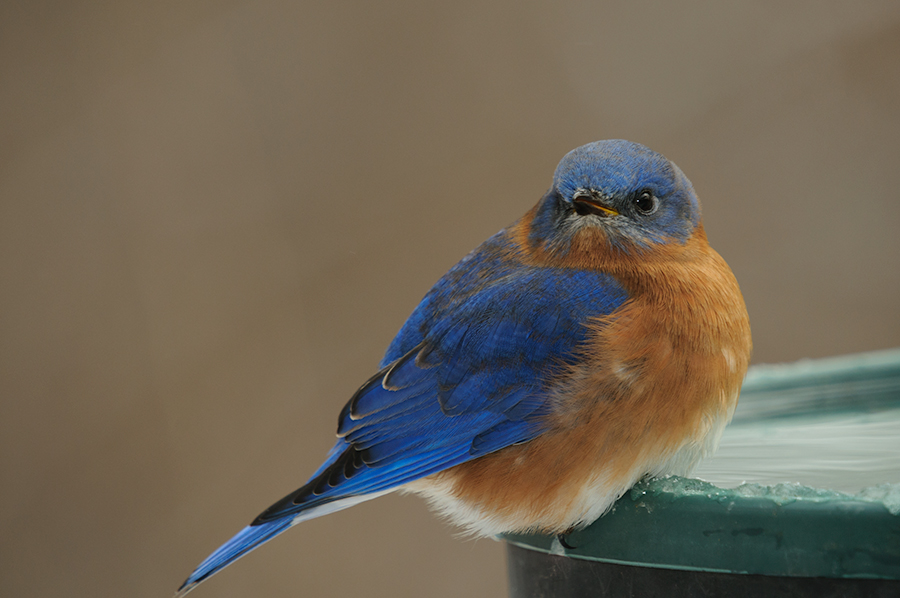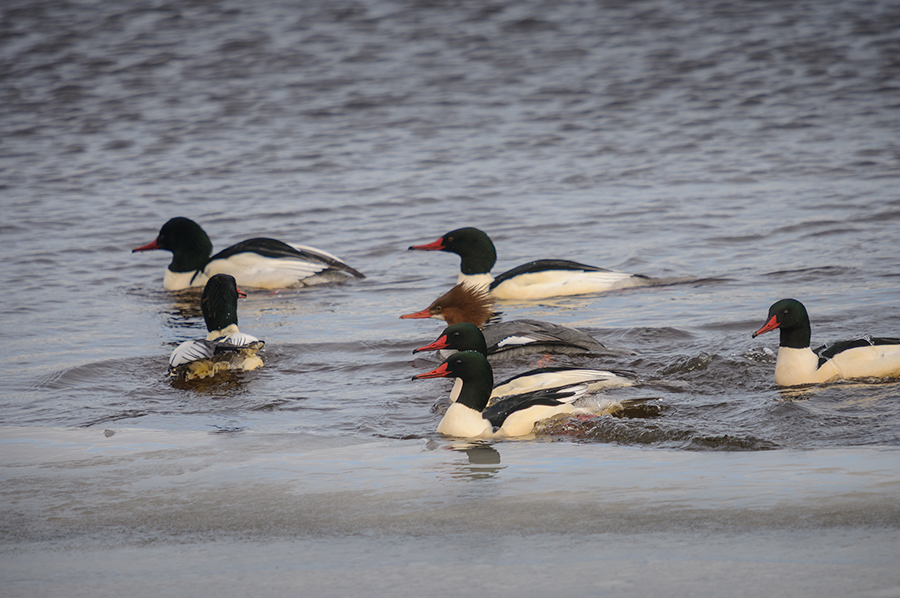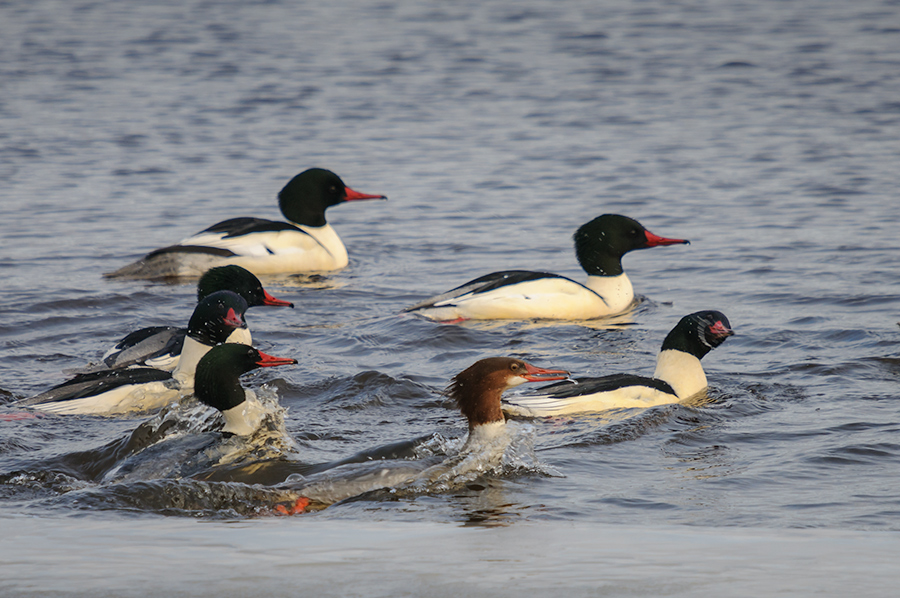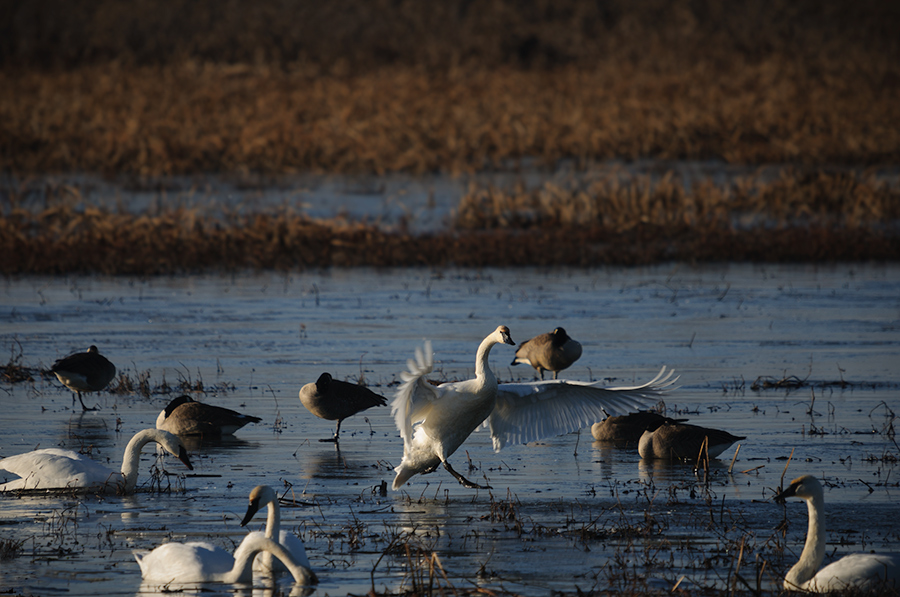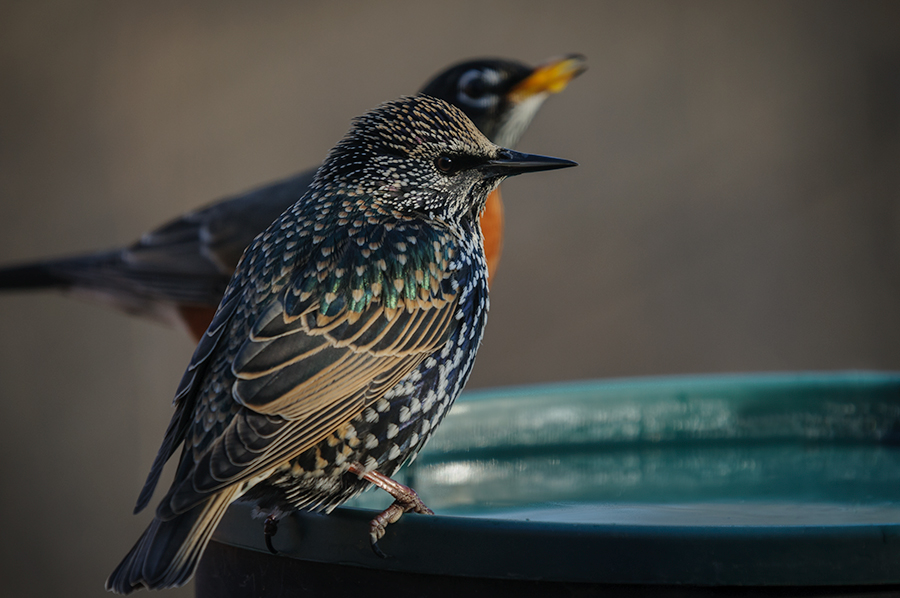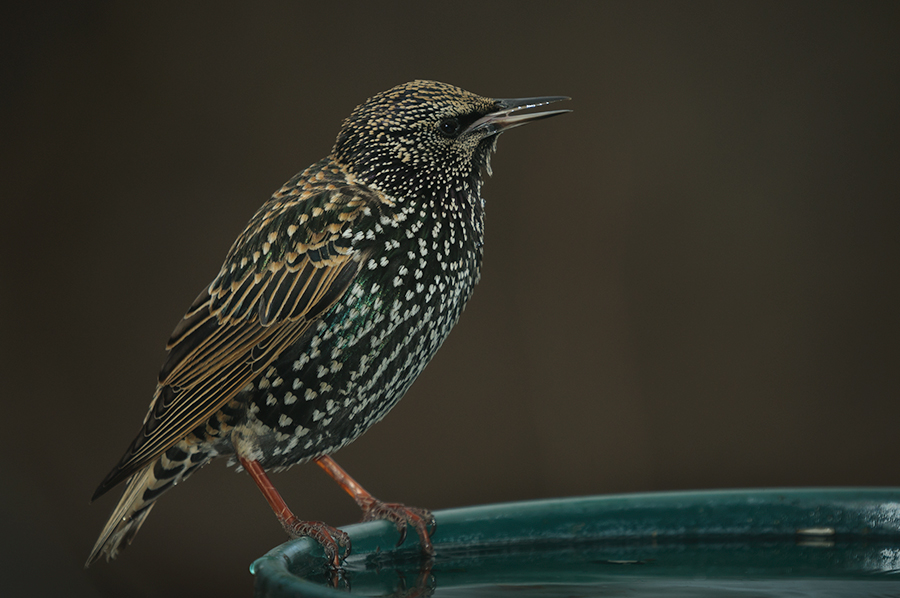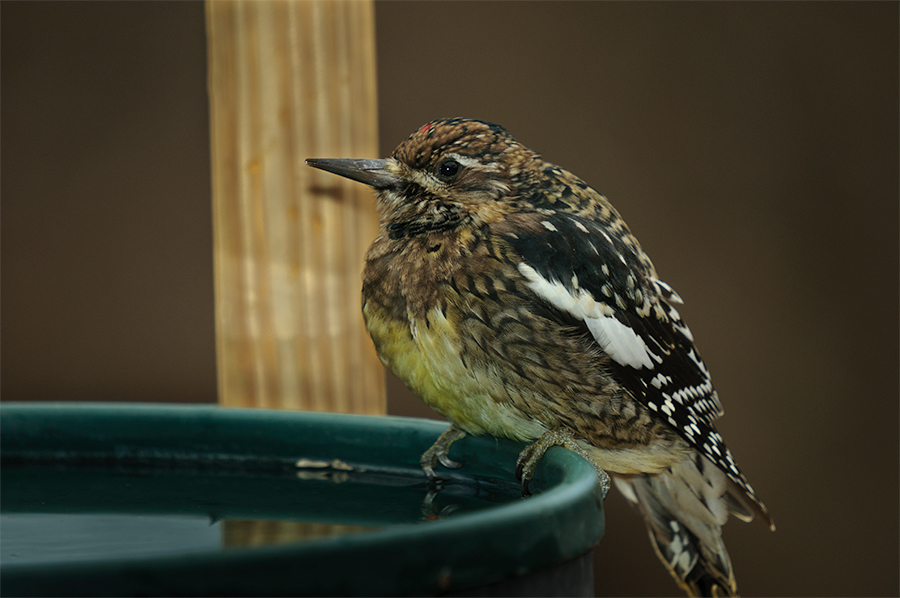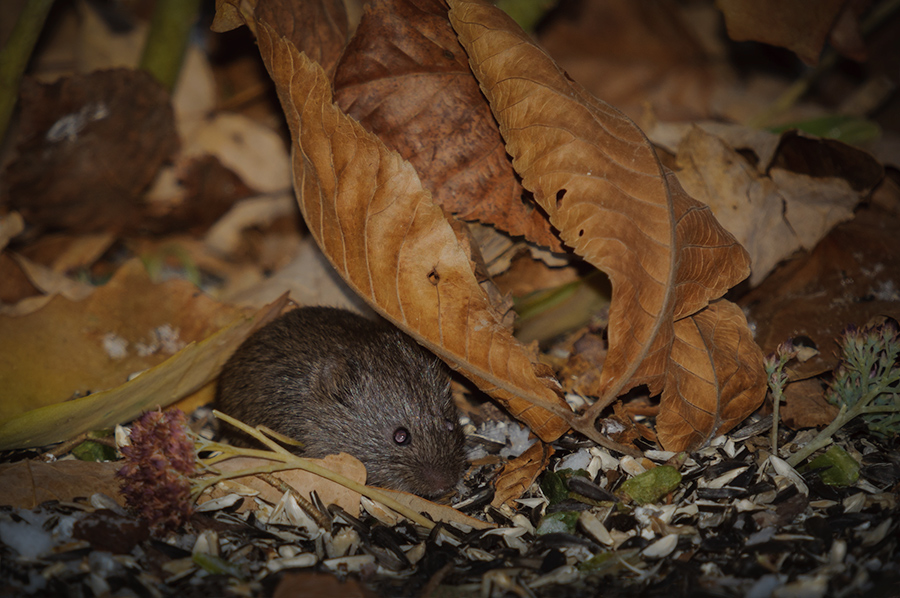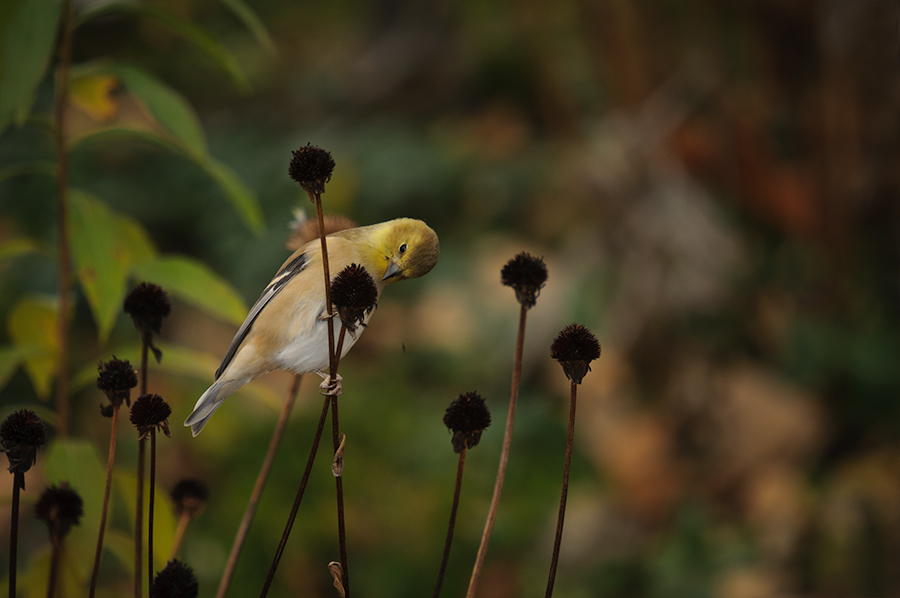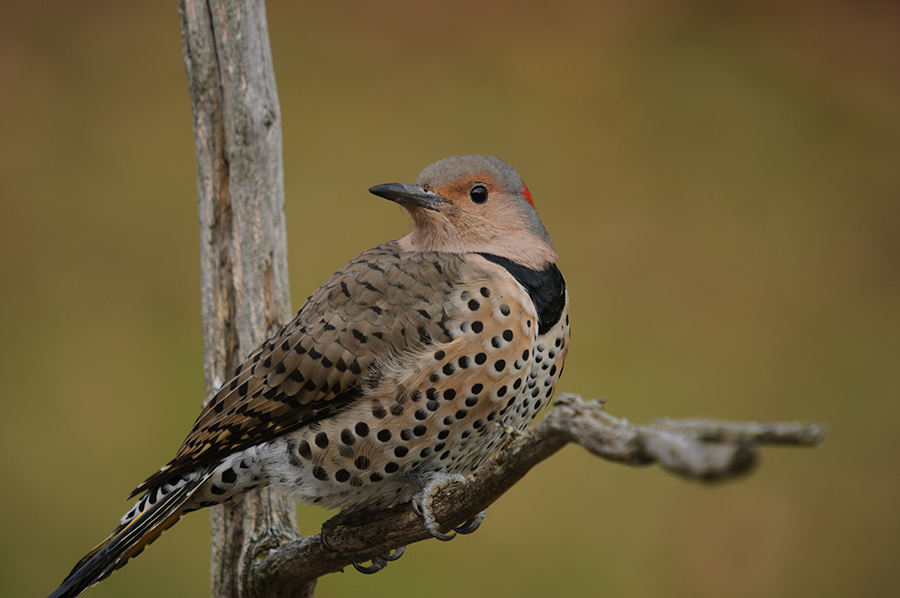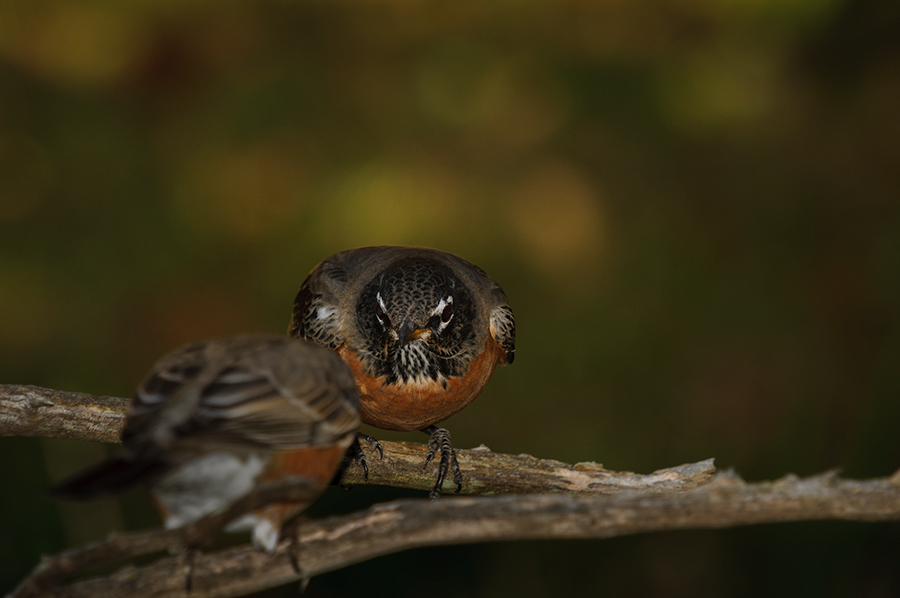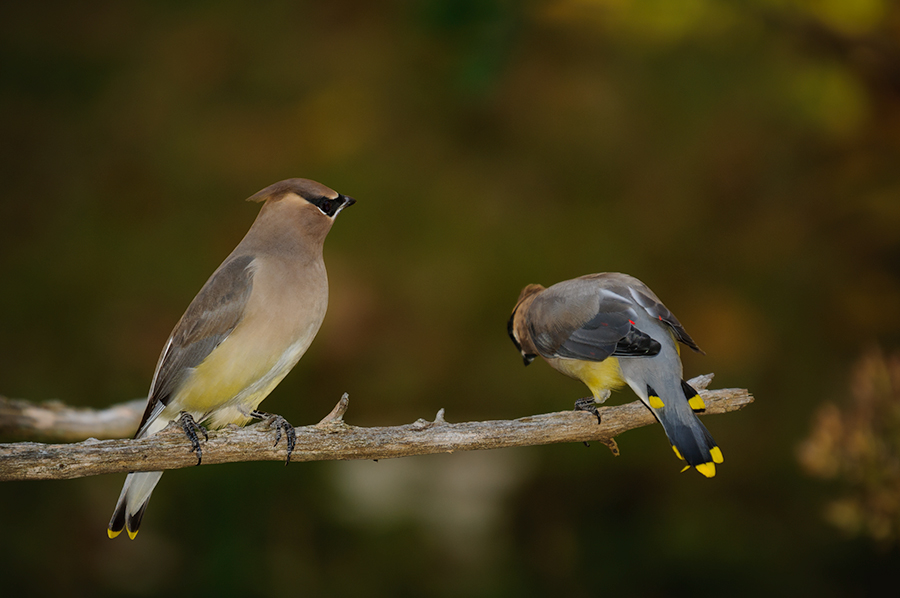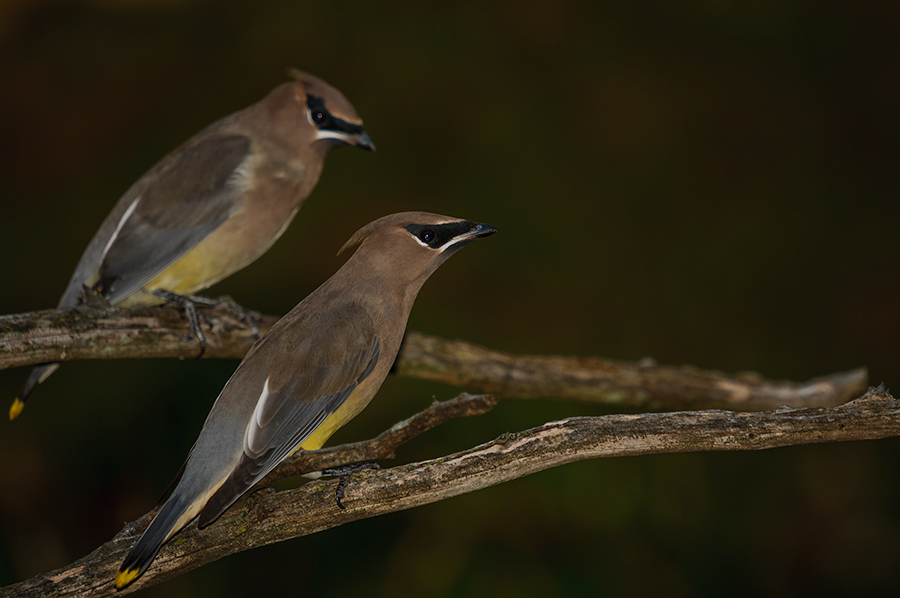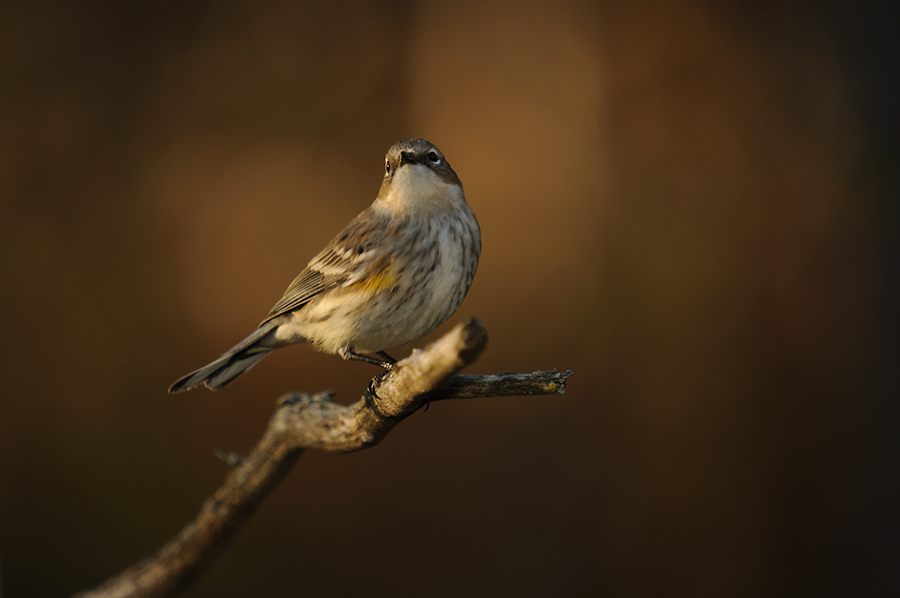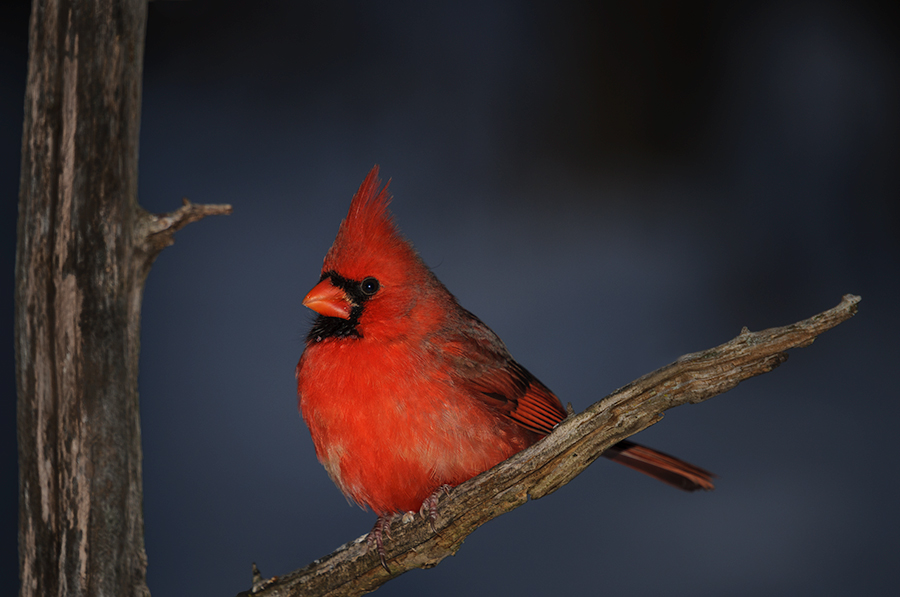
It is bitterly cold here in Iowa at the moment but on the positive side the cold weather brings lots of Northern Cardinals to the yard and its feeders. I don’t think we have ever seen so many at the same time. I counted 20 birds on one side of the house today but there were probably some more on the other side and up in the trees. Cardinals are monogamous and solitary nesters during the summer but in the winter time they flock obviously together to larger “conclaves”.
The cardinals show up at the feeders before sunrise and they are the last ones that leave the feeders in the evening. Catching them with the camera at these times requires the use of a flash light. I try to keep my shutter speed slow so that there is a little light in the background left and it is not just all black. The bluish snow cover in the background of this photo helps to tell the story about what season and time this picture was made. It doesn’t say ‘summertime’, doesn’t it? Under these circumstances not every shot is a keeper but the contrast between the black face mask and the bill helps to maintain focus.

